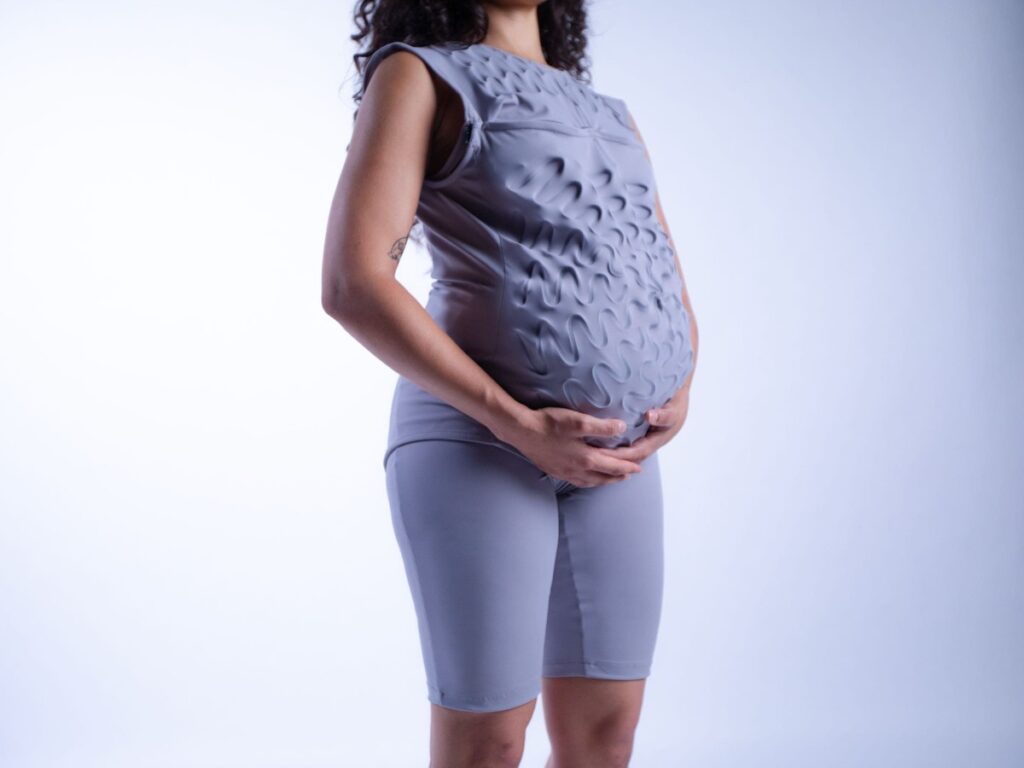
Prototypes integrating fashion technology
Read about the projects developed by the students of the Future Technologies for Sustainable Fashion program
The Future Technologies for Sustainable Fashion (FTSF) program, co-organized by IED Barcelona and Fab Lab Barcelona, focuses on integrating fashion technology with a critical emphasis on sustainability, future scarcity, and space habitation. This interdisciplinary initiative combines the strengths of both institutions, leveraging embodied design ideation, digital fabrication, and synthetic biology open labs. Through hands-on learning, first-person perspectives, and multiverse thinking, students engage in intensive projects aimed at addressing societal needs and the environmental impact of the fashion industry.
During this 12-week program, mixed teams of students from both institutions collaborate to research and prototype solutions using agile manufacturing technologies, innovative materials, and wearable computing.
Recently, students from the current edition of the FTSF program had their Final Gala at IED Barcelona, and they had the opportunity to showcase the prototypes they worked on using ATTRACT technologies.
Get to know all the prototypes:
- SOILSKIN: the project aims to create renewable garments integrated with biotechnological components and it is inspired by post-earth roamers forced to endure aridity. The wool-cotton blend textile used for the body of the dress is temperature-adaptable, sustainable to cultivate and acts as a carbon sink. Regarding the design, it features a 3D printed corset and medieval-style gorget with a degrade colouring, representing desiccation cracks due to global warming. This armour reflects UV rays but also represents the aestheticization of climate change in dystopian narratives.
- Lila Suit: is a maternity garment designed to aid in cases of extreme heat due to future climate change. The stomach area expands, enabling the wearer to feel comfort and support as the pregnancy develops. Additionally, the sides of the suit contain inflatable technology, connecting to the AHEAD sensor, which measures the mother’s nutrients and the baby’s vital signs and heart rate. The cooling thermofibres of the suit enable the expectant mother to stay active, whilst the suit becomes a nursing top to keep her healthy after the baby is born.
- The Shortest Path: rising temperatures due to climate change lead to a significant threat to agriculture. According to FAO, over 873 million people were employed in agriculture in 2021. This project focuses on farmworkers, who face risks such as dehydration, heat strain, inappropriate clothing, and heavy workloads in hot environments. To address these issues, the team has developed a garment that cools the body during work and the design incorporates a nano-tech ventilation system and is created using 3D printing. This innovative garment helps maintain a comfortable body temperature for farmworkers.
- Aspira: the project introduces a modular device that can be attached to any garment or accessory. This device is completely self-sufficient and utilizes dirty, polluted water or body fluids, such as sweat, to cultivate algae. Multiple devices can be worn simultaneously in highly polluted areas. By wearing Aspira in daily life, people contribute to reducing pollution.





